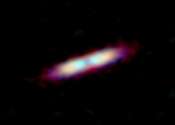A 150-year-old experiment with a beam of light showed germs exist—and how a face mask can help filter them out
Respirators and face masks are staple pieces of personal protective equipment for hospital workers and others in public health, as the COVID-19 pandemic has reminded us.









